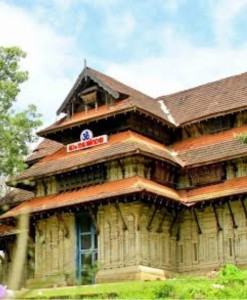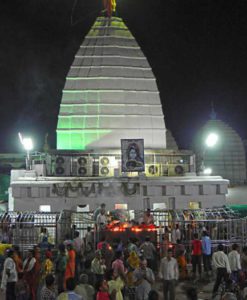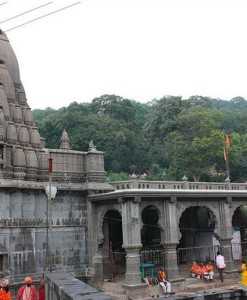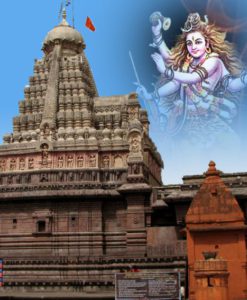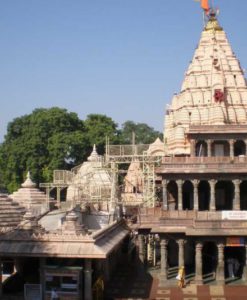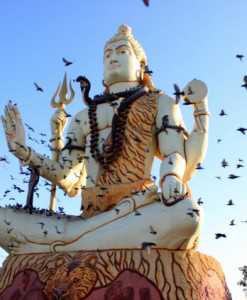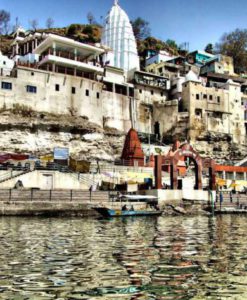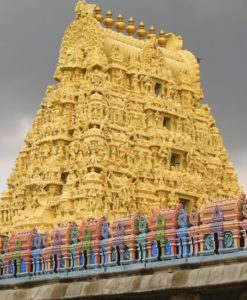No products in the cart.
The Pandavleni Caves are situated on Trivashmi Hill’s tableland and their existence dates back to some 2000 years. Around 24 caves were built by Jain kings and these caves housed Jain saints like Veer Manibhadraji, Tirthankara Vrishabdeo and Ambikadevi. The cave complex comprised of numerous water tanks that were chiselled into rock and large caves that probably served as the areas where sermons were preached or the meeting place of disciples. Several sculptures of bodhisattvas and Buddha are also situated in these caves.
Some of the caves are large and contain numerous chambers – these rock-cut caves served as a viharas or monasteries for the disciples to meet and hear sermons. They contain interesting sculptures. One of the vihara caves is older and finer in sculptural detail and is thought to be nearly as old as the Karla Cave near Lonavala. Another cave (cave No. 18) is a Chaitya and is similar in age to the Karla Cave and has a particularly elaborate facade.
The site has an excellent ancient water management system and skillfully chiseled out of solid rock are several attractive water tanks.
Pandavleni Caves, Maharashtra;
The caves can be traced back up to 3rd century BC. Out of the twenty-four caves, two caves are a major attraction – the main cave which is the Chaitya (prayer hall) has a beautiful Stupa; the second one is cave no. 10 which is complete in all structural as well inscriptions. Both the caves have carvings and inscriptions also. The caves are facing eastwards. So it is recommended to visit the caves early morning as in sunlight the beauty of carvings is enhanced.
The caves were called Pundru which in Pali language means “yellow ochre color”. This is because the caves were the residence of Buddhist monks who wore “the chivara or the yellow robes”. Later on, the word Pundru changed to Pandu Caves (as per Ancient Monuments Act 26 May 1909). Decades later people started calling it Pandav Caves – a misnomer which is used for every cave in India.
The various inscriptions confirm that Nashik in that period was ruled by 3 kings – The Kshatrapas, The Satavahanas and The Abhirs. It seems there was always a conflict between Satavahanas and the Kshatrapas over supremacy. However, all the 3 kings fully supported Buddhism though they were not Buddhist in real sense. The inscriptions also confirm that apart from the kings, local merchants, landlords too supported and donated huge sums for the development of these caves.
The inscriptions of cave no.10 reveal that in 105-106 BC, Ksatrapas defeated the Satavahanas after which Kshatrap Nahapana’s son-in-law and Dinika’s son- Usabhdatta donated 3000 gold coins for this cave as well as for the food and clothing of the monks. Usabhdatta’s wife (Nahapana’s daughter), Dakshmitra also donated one cave for the Buddhist monks.
Pandavleni Caves have beautiful pillared entrances, some contain exquisite sculptures. As it is usual with Indian Cave temples, caves are numbered. It is considered that caves No. 3, 10 and 18 are especially interesting but nearly any rock-cut chamber has its own unique peculiarities.
Especially valuable are the ancient insacriptions – in total caves contain 27 inscriptions in Brahmi script. All this writing has been created in Satavahana period and somewhat later after it some 2000 years ago. Legible inscriptions are located in caves 3, 11, 12, 13, 14, 15, 19, 20.
• Cave 3 – vihara – contains fine and elaborate details. Excavated upon the order of the mother of the famous Satavahana king Gautamiputra Satkarni.
• Cave 10 – Nahapan Vihar – contains spacious hall with 16 cells. This vihara is comparatively older and contains exquisite sculptures. Contains inscriptions telling about donations done by Ushadatta sometimes around 120 AD. Ushadatta was son-in-law of Kshatrapa Nahapana.
• Cave 15 – contains inscription which mentions the last Sathvan King Sri Yajna Satkarni. This king ruled over the western Maharashtra – thus it is possible that it was carved in the early 3rd century AD. Other inscriptions in other caves mention other kings.
• Cave 16 – high vihara with 16 cells.
• Cave 17 – contains intriguing inscription telling that some Greek (Yavana) Indragnidatta and his son Dharmarakshit excavated this vihara together with shrine and the cisterns.
• Cave 18 – chaitya with especially elaborate facade, the oldest cave in group. It contains beautiful carvings and stupa. Inscription on two pillars tells, that chaitya was built by Bhattapalika, wife of the Royal Officer Aghetyana and daughter of the Royal Officer Arahataya.
• Cave 20 – Built in 166 – 198 AD, completed by wife of Mahasenapati Bhavagopa in the 7th year of the Satvahan King Gautamiputra Yajnashri Satkarni. Under the impressive horseshoe arch there is an inscription telling about a gift of villagers – upkeep of the chaitya.
By Road: The caves are present in Nashik. We can reach it easily by hiring bus or taxi from anywhere in the Maharashtra or from neighboring state. Maharashtra is connected with most of the Indian cities by road. The Maharashtra State Transport Corporation (MSTC) runs regulars bus service to the Temple. Nashik is 185 km from Mumbai and can reach through NH-3 via Thane-Kasar-Igatpuri. Nashik is 220 km away from Pune.
By Rail: The nearest Railway Station to the temple is Nashik railway station.
By Air: The caves can be reached through nearest Gandhinagar Airport which is well connected with regular domestic flights to Delhi, Mumbai.
The temple Opening & Closing time: Monday – Friday: 8.00 AM – 6.00 PM, Saturday: 8.00 AM – 6.00 PM, Sunday: 8.00 AM – 6.00 PM, Public Holidays: 8.00 AM – 6.00 PM. The caves are open for visitors from 8 a.m. to 6 p.m. every day with an entrance fee of Rs. 2.Children below 15 years have free entrance. Entry is free for all on all Fridays.



